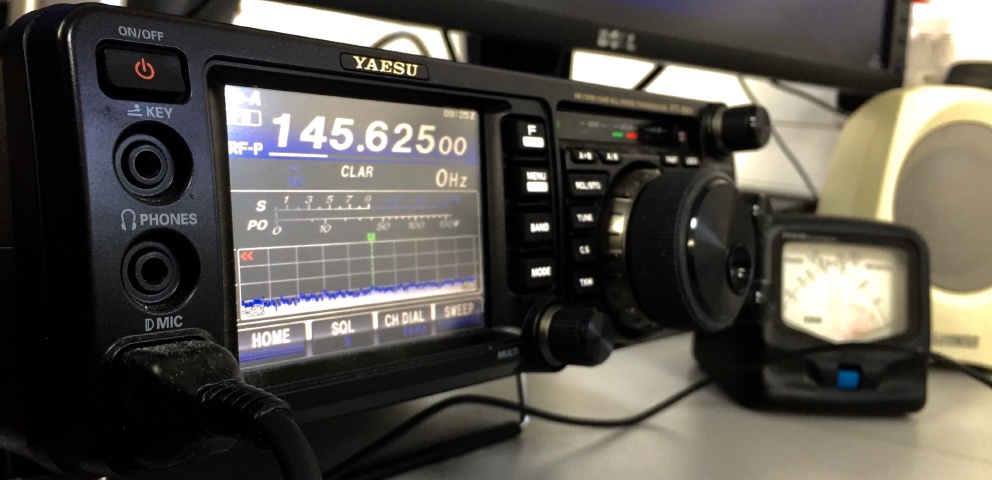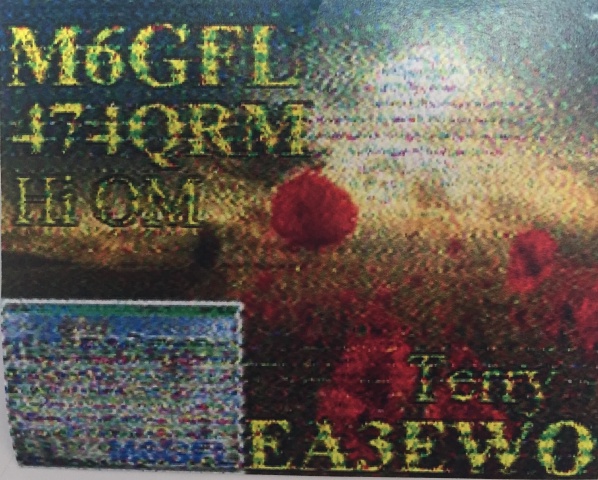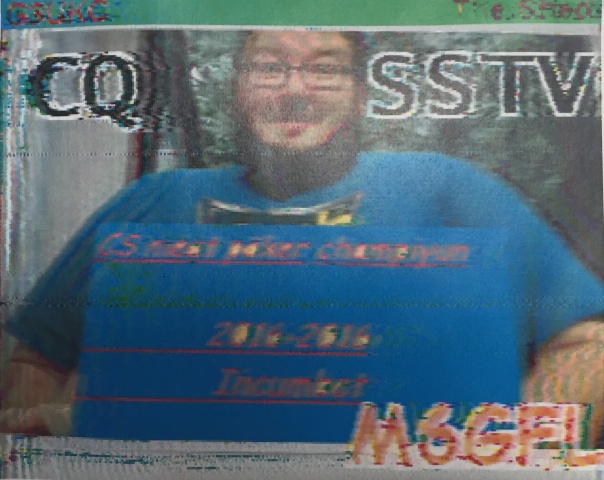Radio

We run a radio workshop in Term 2, allowing members to work on obtaining their amateur radio licenses, and try and make contact with people across Europe with their callsigns! We have had more than 10 members who have passed their Foundation exams and more than 5 who have Intermediate Licenses.
We have a wide variety of radio equipment in the Shed including:
- FT-991
- A battery powered portable HF Setup
- Handheld Radios
Repeaters
Canterbury Repeater is found on top of the Biosciences building (Stacey) at the University of Kent, and covers the majority of Canterbury. It’s callsign is GB3SK, with its repeater input being 434.750 MHz and its output being 433.150 MHz.
SSTV
SSTV stands for Slow-scan Television and is an analog picture transmission method to transmit or receive images via radio in monochrome or colour. There are various free programs out there to code and decode SSTV, the one we use is called MMSSTV. There are even Android applications to do this. The ones we use are called SSTV Encoder and Robot36 for decoding. We have also established international contact with people in Europe, and the ISS transmits SSTV images every once in awhile.
DMR
DMR stands for Digital Mobile Radio and is a cross manufacturer standard for digital radio communications. DMR is designed for portable equipment rather than the larger ones. This technology relies on internet connected hardware at repeaters and therefore you can communicate with people across the entire world! In DMR, talk groups exist, so if you are in the World Wide 1, everyone can hear it in the group, however if you are in the South East England talk group, only people in range of the South East England repeaters can pick up the signal. However, there is a higher entry price as digital radio is more expensive as analog radio. DMR also makes you sound like a Dalek from Dr Who!
PSK31
PSK31 is a data mode for sending text rather than voice, it is similar to morse, yet it is faster, designed for cases when there’s low SNR (Signal-to-noise ratio). PSK31 can usually be decoded pretty successfully even when there’s lots of background noise and the signal is barely noticeable. Due to this, it is often used on relatively low powers since it can still go long distances and be heard. We have made contact with people from the Dolomites (NE Italy) using 20W.
Licenses
If you are interested in amateur radio, there are 3 licenses available in the UK, each builds on the last.
Foundation License (exam cost: £27.50)
- Allowed up to 10 watts of radio output
- May not build own equipment
- May build equipment from approved kits
- More information
Intermediate License (exam cost: £32.50)
- Allowed up to 50 watts of output
- May build own equipment
- More information
Advanced License (exam cost: £37.50)
- Allowed up to 400 watts of output
- May apply to use other bands
- More information
Background
There was an Amateur Radio Society run by students from the 1970s up to 1995. However, it’s popularity declined after 1995 and it was difficult to find interest to make it a society, and in 1999, the Radio Shack was demolished to make way for Stock Court.
However, we have picked up where the old society have left off, and we offer opportunities for students to expand their interest in amateur radio.
Ofcom
Radio licencing is controller by Ofcom in the UK. They are who you need to apply to in order to keep your radio licence up-to-date, and who will provide your call sign.
If you are going to get your radio licence, you need to create an account and choose a call sign (for foundation you will have something like M3XYZ or M6XYZ where you can choose the XYZ, if it is free.)
Resources
We have books for the foundation licensing in the TinkerSoc supplies cupboard, if you would like to borrow it for exam revision, just send us an email and we’ll lend it to you. Alternatively you can buy it online from Amazon for about £5.


